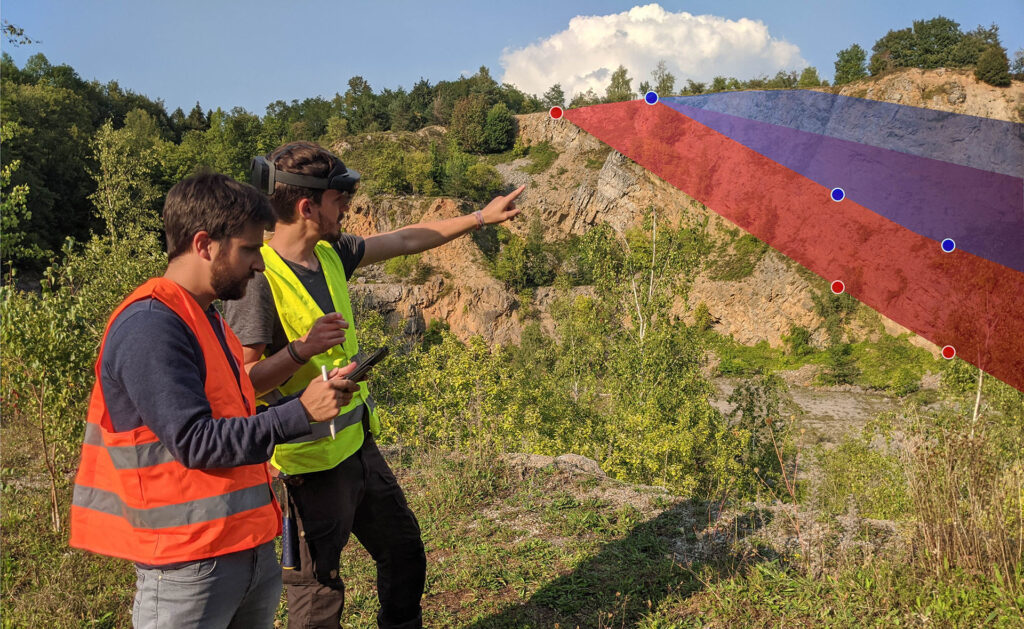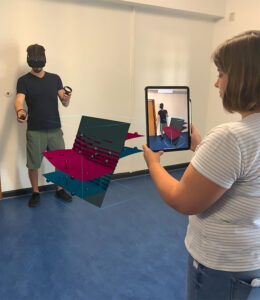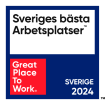Mixed reality to support geologists
In the future, geologists will be able to see ore deposits as a hologram in the field. The German startup company Terranigma Solutions enlists LTU Business and Luleå University of Technology in developing a mixed reality product for geologists and the mining industry.

The FARMIN project aims to develop a solution that visualizes 3D geological data and allows exploration and mining professionals to modify models in the field.
The goal of the FARMIN project is to enable geologists to get a view closer to reality of what is in the earth’s crust – with the help of dynamic 3D modeling. Hopes are that the technology will reduce cost and lead times for example when establishing mines. LTU Business is tasked with analyzing markets and packaging strategies for the commercial launch of the product.
– The technical solution is versatile and can be useful for several industries. We contribute with business strategy in the product development process, says Jens Oddbratt, LTU Business, who runs the EIT RawMaterials project FARMIN.
“It is incredibly valuable to have LTU Business’ expertise and help to ensure a fast and smooth development process. We will work very closely together.” – Fabian Stamm, COO at Terranigma Solutions.
Evolving methods in the mining industry
The startup company Terranigma Solutions, which is the commercial partner in the project, is a spinoff from Aachen University in Germany. They already have a modeling software which FARMIN will partly be based on, and the project is one of several where they work with geo modeling. Co-founder Fabian Stamm explains why he believes that a digital transformation will mean a lot to geologists and, for example, the mining industry:
– We cannot see through the earth’s crust, but what we do today is that we drill in selected spots to be able to model the rest. The fact that we get a fragmented view leads to uncertainty. The new technology will support more reliable models and save on drilling costs. The technology will also make it easier for geologists to explain to politicians and decision-makers for example why they want to build a mine in a specific place.
The technology used is mixed reality that projects holograms into an image of the real world, for example through a mobile phone camera or Microsoft HoloLens.
Today, geologists work both in the field and in front of computer screens without an integrated system.
– Today, there is a lot of running between nature and offices; we make observations in nature that we record and then take with us to the office to feed data into the model we are building. This creates some uncertainty about whether the model is correct. The idea with FARMIN is to create a direct integration with nature, says project coordinator Tobias Kampmann, associate professor at Luleå University of Technology.
Ore deposits as holograms
 The technology used is mixed reality that projects holograms into an image of the real world, for example through a mobile phone camera or Microsoft HoloLens. In other words, the technology is not entirely new, but it is not yet used in geology and exploration. The idea is that FARMIN will enable the geologist to work with complex 3D models anywhere, anytime, from any chosen device in a cloud-based solution.
The technology used is mixed reality that projects holograms into an image of the real world, for example through a mobile phone camera or Microsoft HoloLens. In other words, the technology is not entirely new, but it is not yet used in geology and exploration. The idea is that FARMIN will enable the geologist to work with complex 3D models anywhere, anytime, from any chosen device in a cloud-based solution.
LTU Business chooses a proven method for commercialization
Innovation projects like FARMIN follow a certain approach where the market potential of the new technology is established early on. What the “innovation world” calls commercialization means that you need to learn who the target group for the innovation is, what potential markets there are, and learn about any risks such as competitors or lack of profitability. The analysis results in a go-to-market strategy that for example states which value proposition is important and which business model is best suited. For this expertise, the project has turned to LTU Business and the Innovation Due Diligence method, which is used on more than 300 ideas annually, and is also taught as a best practice method at research institutes around Europe.
“Our method is based on collecting and analyzing data that leads to easier decision-making in the early stages of product development. We are extremely proud of the trust from the project’s partners and financiers in this initiative that can transform the mining sector on a global scale.” – Jens Oddbratt, business developer at LTU Business.
– It is incredibly valuable to have LTU Business’ expertise and help to ensure a fast and smooth development process. We will work very closely together, says Fabian Stamm.
Tobias Kampmann adds that it is also valuable for the region that LTU Business is involved at an early stage.
– The market is not established yet and there is an enormous potential for development in the area, he says.
LTU Business works with around twenty-six similar innovation projects for the mining and raw materials sector. Jens Oddbratt says:
– Our method is based on collecting and analyzing data that leads to easier decision-making in the early stages of product development. We are extremely proud of the trust from the project’s partners and financiers in this initiative that can transform the mining sector on a global scale.
Facts
The FARMIN project has a budget of two million euros, of which EIT RawMaterials is the main financier. The project partners are LTU Business, Luleå University of Technology, Boliden Mineral AB, Minas de Aguas Teñidas SAU from Spain, DMT GmbH & Co. KG, Terranigma Solutions and RWTH Aachen University from Germany, as well as a company in Austria that develops MR / AR solutions: Robotic Eyes GmbH. The project started in January 2020 and will end in December 2022.
Learn more about Innovation Due Diligence.

![]()
 Their game will be released in Japan
Their game will be released in Japan















